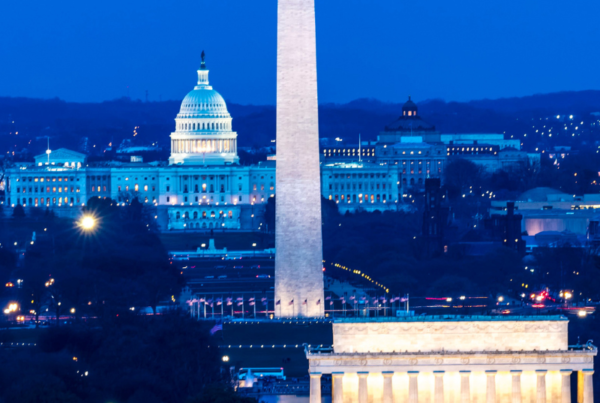Every once in a while, you meet a sweet, special soul who tugs your heart and never lets go. For me, that was a dear friend and former Afghan interpreter for U.S. Special Operations, Asadullah, whom we nicknamed J.
When the threats against his life mounted, Jack embarked on a new life, coming all alone to the United States on a Special Immigrant Visa (SIV) on August 21, 2015. I remember the moment he stepped off the plane alone in Los Angeles, having just fled a small village in Afghanistan’s north to embark on a new and daunting American life. And that he did. J became a respected health worker, danced to Persian music with us, fell in love with a young Afghan he planned to marry and regularly sent money home to his struggling family amid war and poverty.
Then, exactly seven years to the date since he arrived, I received the chilling news from a mutual friend in San Diego that left me raw: J, only 32 with wide, innocent eyes and a sing-song voice, was put into a medically induced coma and passed away on September 4.
J loved America. He loved his Mothership. He was us. He was the best of us. He escaped war and endless Taliban warnings years ago, only for the war spilling into and within our borders to tragically take his young life.
As I later found out, J was with other Afghan friends for a night of hookah – the popular Middle East/South Asian tobacco-filled water pipe, something he and I had done many times together – when one friend decided to “up” the ante with something presumably equivalent to hashish, the common Afghan-native cannabis plant. Only the substance was not purely marijuana – it was lined with fentanyl.

And just like that, Jack became yet another heart-rendering statistic in America’s losing battle against the influx of fentanyl, one of more than one hundred and fifty Americans who lose their lives every day to this ascending peril.
Fentanyl is the single most lethal drug menace the United States has ever faced, and we are clearly losing the fight. The substance, typically manufactured in China and smuggled into the U.S. by Mexican cartels, is everywhere – from swollen cities to tiny towns. Nobody is immune, and no drug or illicit pharmaceutical is safe.
While we often hear data and headlines surrounding the term “opioid overdose,” the reality is that many of these “overdoses” illicitly manufactured fentanyl, which differs from pharmaceutical fentanyl prescribed for pain, drives most opioid deaths. The synthetic opioid is fifty times stronger than heroin and one hundred times more potent than the powerful painkiller morphine. As a result, even the tiniest speck laced in a joint, pill, nasal spray, eye drop or even small candy can kill.
Worse, you cannot see it, taste it or smell it, and the window to intervene and save a life is incredibly short.
According to the Centers for Disease Control and Prevention (C.D.C.), 107 375 people in the U.S. died of drug overdoses/poisonings in 2022 – with fentanyl detected in eighty percent of all overdose deaths. In addition, an analysis of C.D.C. data by Advocacy Group Families Against Fentanyl suggests that fentanyl – coded as a “synthetic opioid-related death,” has grown into the number one cause of death of individuals aged between 18 and 45, outpacing former front-runners motor vehicle accidents, cancer, firearm deaths and cardiovascular disease.
While other industry experts have disputed the claim, it is essential to note that officials also characterize overdose deaths as accidents, suicide, homicide or undetermined, making actual raw data challenging to ascertain. Furthermore, many jurisdictions across the U.S. do not drug test people who die, which means the already alarming figures are likely far worse than we could imagine.
Following massive leaps in illegal fentanyl deaths starting in 2015, then-President Trump declared the opioid epidemic a “national emergency” in August 2017. The designation enabled authorities to expedite action and unlock more funding, support and resources to tackle the problem from various fronts.
The following year, the nation experienced a decline in opioid-related deaths for the first time in two decades. But unfortunately, the onslaught of the COVID-19 pandemic in early 2020 sent those hopeful figures soaring again in the wrong direction. With all attention on infectious disease, decision-makers cast the opioid emergency aside. Unfortunately, the U.S. then entered the deadliest phase – a phase that continues to claim lives by the minute.
But even in the opioid crisis arena, other experts lament that the heavier focus on fentanyl has paved the way for the cartels and their counterparts to usher in even more disturbing substances. Notably, the sedative xylazine progressively taints the U.S. drug inventory, an animal tranquilizer dubbed “tranq” or the “zombie drug,” which first hit the streets around 2019 and then escalated amid the pandemic. Used to bulk up illicit fentanyl, xylazine is incredibly destructive. For those it doesn’t kill, the substance causes wounds to burst out of one’s body, with a scaly dead issue that can lead to amputation and can cause users to black out for hours, leaving one susceptible to rape, abuse and robbery.
However, its prevalence is frighteningly unknown as hospitals and state medical examiners often do not test for it. Moreover, given its approval for veterinarian use by the F.D.A. more than five decades ago, regulators do not classify xylazine as a controlled substance.
“Xylazine is commercially freely available to people in agriculture in the United States in large quantities in liquid form. However, it is uncontrolled because until recently, humans did not take the drug,” one source well-connected to the illicit drug trade confides. “The xylazine used as a cutting agent in these combo mixtures typically comes from clear web Chinese chemical companies that use code words for advertising their products.”
In less than a minute of searching, the world wide web redirects me to “High-Quality X” from an online China-based pharmacy.
Moreover, we have the increasingly concerning Isotonitazene, more commonly referred to as “iso.”
Iso, a synthetic opioid, is ten times stronger than all-powerful fentanyl. Federal law enforcement first identified iso on U.S. streets around 2019 – starting in the Midwest before expanding south and then across the country. Like fentanyl, criminal drug enterprises blend iso with other drugs to evade detection. Like fentanyl, iso precursors also hail from China.
According to my well-placed source, the role of Chinese players is ever-expanding.
“There is the supplying of the precursors to the cartels, and then they also send cooks to guide the cartels,” notes the insider. “And the manufacturing of Iso is still unregulated.”
In recent years, federal and local lawmakers have put some “harm reduction” efforts in place. These initiatives range from community education initiatives against counterfeit medications and the broader distribution of the emergency overdose-reversal medication naloxone to overdose prevention centers and the dissemination of self-testing strips.
Nevertheless, these aren’t without blockades and hot-button debates of their own. In more than a dozen states, even the most rudimentary mechanisms for drug checking, such as fentanyl test strips, are outlawed under the guise of “drug paraphernalia,” with conservatives condemning the practice as condoning illegal drug use.
But lawmakers seeking to take on the broadening calamity should also be careful of “over-legislation,” which has played some role in America’s drug catastrophe today.
For example, in 2005, Congress passed the Combat Methamphetamine Epidemic Act to address the “meth crisis.” This law restricted the commercial selling of the prominent decongestant Sudafed, which homegrown labs used to cook meth. Nevertheless, Mexican cartels quickly filled the vacuum with far more deadly means of manufacturing the banned street drug, tighter ties with Chinese producers and subsequently, death levels in our borders reached new heights.
And when legislation cracked down on medical professionals prescribing opioids, addicts merely turned to the deadly and contaminated street versions.
Indeed, the scope and severity of the drug epidemic in the U.S. desperately require new and comprehensive solutions. Thus, Blockchain technology has a potentially prominent role to play.
According to a 2021 peer-reviewed in the National Library of Medicine, “Blockchain can address some issues surrounding health data management, including data availability, data sharing and interoperability, and privacy and security.”
The assessment identifies five primary applications of Blockchain to opioids, ranging from clinical trials and pharmaceutical research to incentivizing data donation and behavior change, secure exchange and management of e-prescriptions, supply chain management, and secondary use of clinical data for research and public health surveillance.
As companies and government organizations store data in diverse systems, research on opioid abuse is fragmented. Blockchain technologies can streamline this process, providing secure and tamper-free data exchange while preserving privacy.
“We found that clinical trial research, supply chain management, and secondary use of data had the most examples in practice and the potential effectiveness of blockchain,” the authors note. “More discussions and studies should focus on addressing technical questions concerning scalability and tackling practical concerns such as cost, standards, and governance around implementing Blockchain in health care. In addition, policy concerns related to balancing the need for data accessibility that also protects patient privacy and autonomy in revoking consent should also be examined.”
Further, Blockchain can help clinical trial management and reporting, incentivize data sharing and address supply chain challenges such as drug rerouting, theft, the origination of sham medicines, and the pollution of drugs at any point during the mass production, storage or delivery process.
Of course, remedying the immense mechanical and procedural hurdles for the effective implementation of Blockchain technologies requires close cooperation between the public and private sectors and a willingness to want to solve the crisis.
Will our leaders do what it takes? Many American lives depend on it, and it is war we can no longer afford to ignore.











